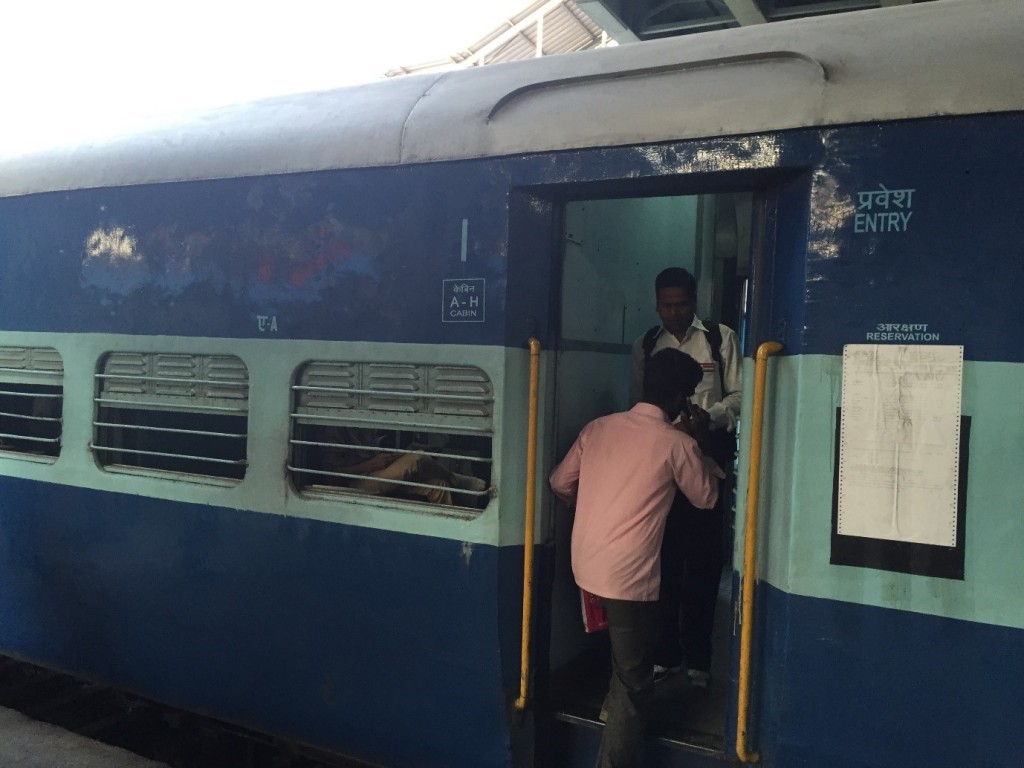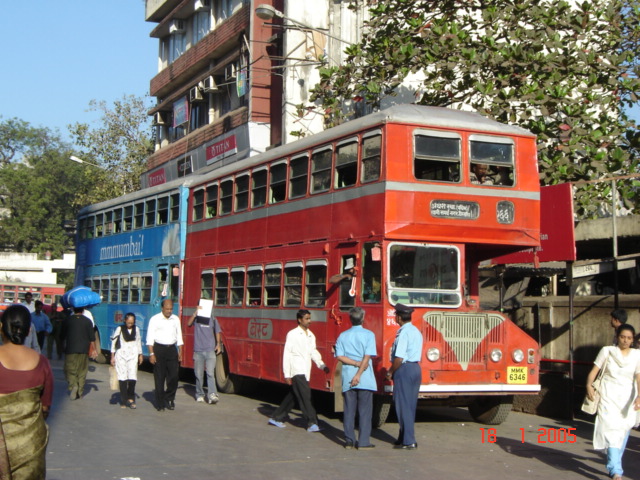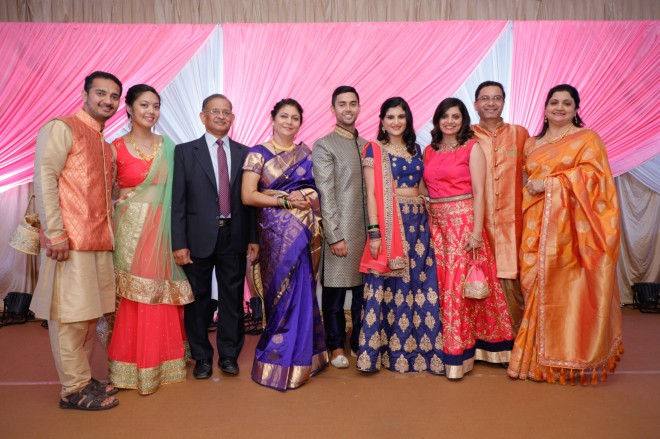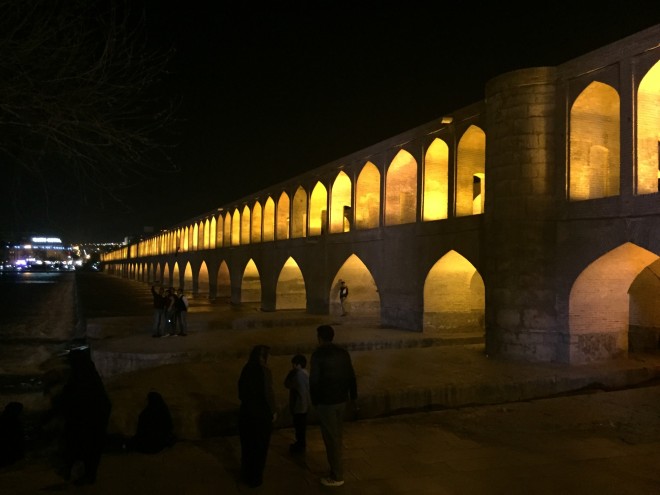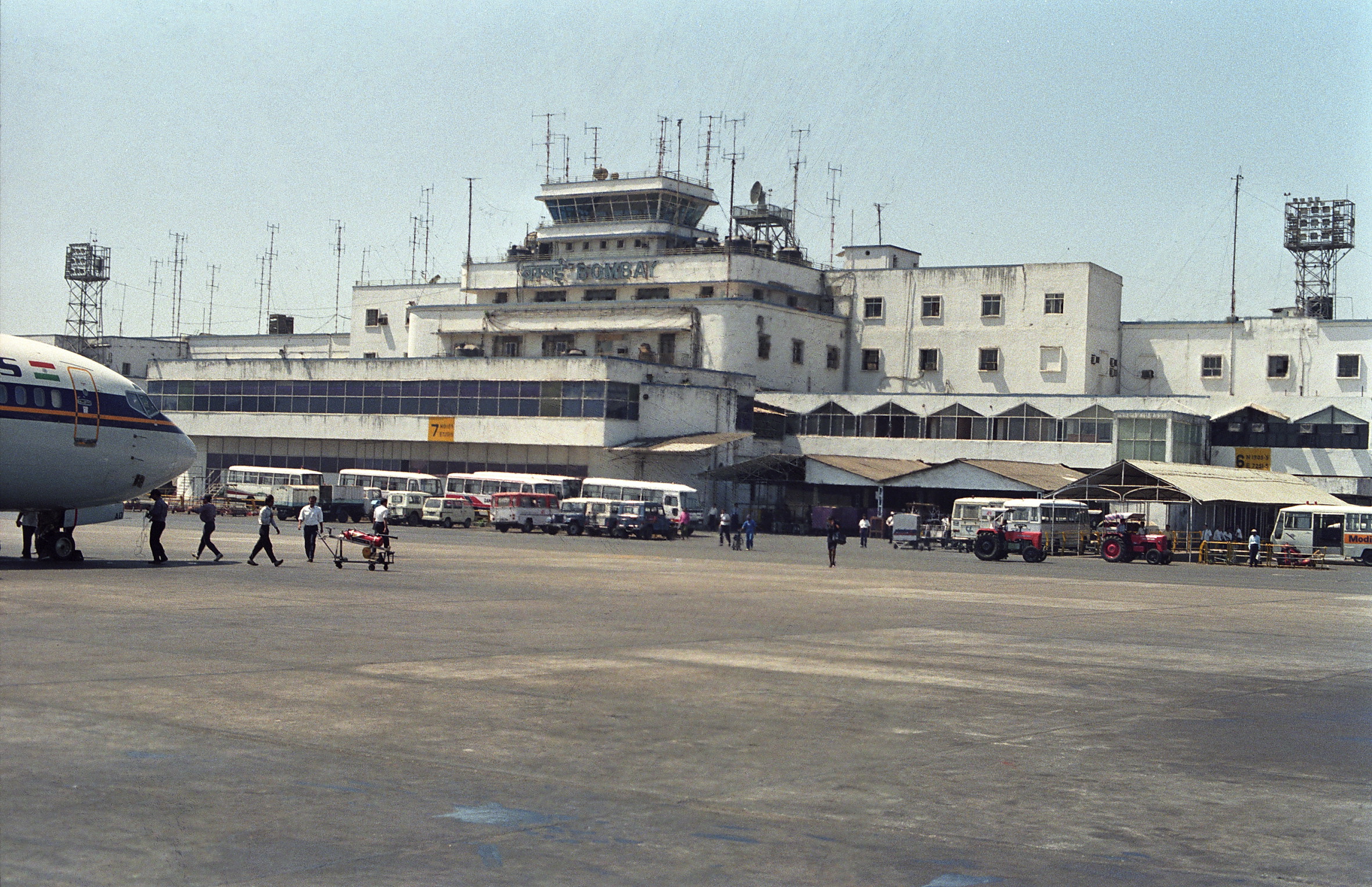When I caught the train I had missed.
Year – 1983. I had a confirmed reservation from Delhi Jn to Kiratpur by Himachal Express, departing Delhi at 8.40 pm. I was caught in a traffic jam close to the train station, which meant that I was a minute late for my train. I could see the tail lamp of the Himachal Express going away from me as I was climbing down the stairs to the platform!
As my good luck would have it, Delhi – Jammu Mail was to depart soon from an adjacent platform. I got in the first-class coach and stood near the door with my luggage. When the train ticket examiner (TTE) asked, I explained my situation to him. He asked me to take an upper berth and assured me that he would wake me up at Ambala Junction.
He did. I got down at Ambala at about 2.30 am and had a cup of hot tea on the platform. Presently, ‘my’ Himachal Express (which I had missed at Delhi) arrived from the Saharanpur side. As I boarded ‘my’ first-class coach, the TTE enquired, “where have you been all this while?”
He laughed aloud when I shared my story, and said, “this is unbelievable!”
As a rail enthusiast, I knew that Himachal Express took the longer Delhi – Ghaziabad – Saharanpur – Ambala route, while the Jammu Mail took the direct Delhi – Panipat – Ambala route, thus reaching Ambala much quicker. Being diesel-hauled, Jammu Mail was also faster than the steam-hauled Himachal Express.
Of course, all this was possible thanks to the kind-hearted TTE on Jammu Mail, who allowed me to travel without an appropriate ticket, and without imposing any penalties on me!
Looking back, I consider myself lucky that I got many opportunities to travel by first class on Indian Railways. Sadly, one cannot enjoy this experience any more.
I am speaking about the non-airconditioned first-class. With the advent and popularity of air-conditioned travel, the only non-airconditioned first-class travel I can undertake now is on Mumbai suburban EMU locals.
Early travels
I recall my first journey by first-class was in late 1960s, when my dad got promoted from the rank of Sergeant to Flight Sergeant in the Indian Air Force. One of the perks of this new rank was to be able to use first class during our annual holiday travel – from dad’s base station to Itarsi and Nagpur, my grandparents’ places. The ‘services’ allow totally free travel, once every year.
Our initial trips were from New Delhi to Itarsi / Nagpur by 16 Up Grand Trunk Express going south, and 57 Down Pathankot Express (Dadar – Amritsar Express) on the return from Itarsi to New Delhi. I was fascinated by things such as the metallic 3-position regulator-cum-switch for the fans in the compartment, the blue night-light, the intermediate ‘stoppers’ for the two sets of windows – the outer metallic window and the inner glass window. I vividly recall the oblong IR logo on the rexine of the broad berths, the folding table and the mirror in every compartment. The back rest would drop down to become a very broad and spacious berth. Sometimes it was a 4-berth ‘cabin’, while sometimes it would be a 2-berth ‘coupe’. An attendant in the first-class coach took care of passengers’ need, such as ordering meals. He had an ‘attendant seat’ near the door.
We had to carry our own bedding though, which wasn’t too much during our summer holiday travels. During these years, Grand Trunk Express had already been ‘dieselized’ while the ‘Pathankot Express’ operated with steam loco between Itarsi and Delhi.
Meter Gauge first class
Dad’s next posting was at Jodhpur, after which he was transferred to Bareilly. This move presented me with my first opportunity of travelling by first-class on a meter gauge train. We took the Jodhpur – Delhi Mail, departing Jodhpur at mid-day, arriving at Delhi Jn (old Delhi) the next morning, all behind a steam locomotive.
The travels from Bareilly to Itarsi and Nagpur between December 1970 and May 1974 offered me many different opportunities to travel by first class, by both meter and broad gauge. We would always take the Kathgodam – Agra Fort Kumaon Express from Bareilly to Mathura, where we would change to Firozpur – Bombay Punjab Mail. The detail of one such journey is captured in my piece “A journey by Indian Railways in 1972”. This was one of the only two occasions when I experienced the classic non-corridor wooden construction first class coach.
Our next IAF station was Gandhinagar, which in 1974 was the newly formed capital of Gujarat state. All our travels used Ahmedabad station (not Gandhinagar Capital). An Indian Air Force truck would come from Gandhinagar to Ahmedabad every afternoon, and return at 8 pm, after the arrival of the meter gauge Delhi Ahmedabad Mail.
To reach Ahmedabad from Itarsi at the end of the summer vacation, I recall taking the 58 Up Amritsar – Dadar Express from Itarsi to Bhusawal, then change to a Bhusawal – Surat Passenger which brought us to Surat before sunrise the next morning. We then took the Gujarat Queen (Express) from Surat to Ahmedabad, leaving Surat at about 5.30 am. It was a conventional corridor-type first-class coach. We were the only occupants of a 4-berth compartment as the train headed north.
What I remember most was the silent acceleration of our train, thanks to a WAM4B electric loco leading our train (the Valsad-Ahmedabad section had been electrified recently). I also remember sighting mango trees laden with so much fruit that one could easily reach the fruit without climbing the tree. The other aspect which struck me was that each level crossing had a frame on either side of the tracks – something I had not seen on IR till then – as I had never travelled on an electrified section till then! These frames protect any tall vehicles from the live electric catenary wire, and vice-versa.
On a separate occasion, I have travelled between Baroda and Ahmedabad by Gujarat Queen, when we were in a first-class Chair Car, which used to run between Baroda and Ahmedabad, and attached to the very rear of the train at Baroda for the north-bound run.
Variety:
The summer vacation journeys from Ahmedabad to Itarsi were interesting. We took the then new 165 Down Sabarmati Express from Ahmedabad to Bhopal, and then either the Grand Trunk (if we reached Bhopal on time) or the Dakshin Express to Itarsi. I call it ‘interesting’ because:
- part 1 – Ahmedabad to Baroda was a fast 2 hour run behind an electric loco (2 pm to 4 pm)
- part 2 – Baroda to Bhopal was a very slow ‘passenger’ run behind a steam loco (4 pm to 6 am)
- part 3 – Bhopal to Itarsi was another fast run behind a WDM2 diesel locomotive!
Through and Sectional carriage service:
It was while we were at Gandhinagar that I got the opportunity to experience another unique aspect of Indian Railways – through and sectional carriage service, also called a ‘slip coach’.
We were travelling from Nagpur to Ahmedabad, and there was no direct connection on the day we wanted. (134 Up Howrah – Ahmedabad Express was a twice-weekly service then). So, we reserved our journey by the Howrah – Viramgam slip coaches. I still recall the very fast run of 2 Up Howrah – Bombay Mail behind a WDM2 diesel between Nagpur and Bhusawal. At Bhusawal, our first-class coach and another 3-tier sleeper coach were attached to a Bhusawal – Surat passenger, which made the overnight journey on the single line section behind a steam loco. At Surat, our slip coaches were then attached to Saurashtra Express – headed by an electric loco – which eventually deposited us at about 8 pm at Ahmedabad, where we got down. (the slip coaches would continue their travel by the same train to Viramgam).
During my stay at Bhopal (1977-82) for my engineering studies, I noticed that the newer versions of the first-class coach had windows which were significantly wider than before. The Grand Trunk express was one of the first trains where I saw these coaches, which certainly looked better than the older square-windowed coaches.
During these Uni years, I was fortunate enough to experience another incredible journey by first class. My parents and I travelled from Suratgarh to Howrah, owing to my dad’s transfer to IAF station, Barrackpore.
The first part was completed using Suratgarh – Delhi ‘slip coaches’, which were attached to Chandigarh Express from Suratgarh till Bhatinda, from where Firozpur – Bombay Punjab Mail carried them overnight to Delhi Jn., with an early morning arrival at Delhi.
Our next train was 12 Up Delhi – Howrah Express, which took 2 nights and a day for the journey. After doing steam between Suratgarh and Bhatinda, and diesel between Bhatinda and Delhi, it was now the turn of a venerable WAM1 AC electric locomotive to carry us up to Mughalserai.
We were fortunate enough to get a non-corridor 4-berth coach on this train, and the 4th berth was vacant all the way. These non-corridor coaches were extremely spacious and comfortable. They had doors opening on both sides – directly on to platform (i.e. no corridor) and a private shower & toilet facility, which occupied the entire width of the coach. It was like a private room for a family.
This was also my longest journey under electric traction till then.
After leaving Delhi at about 10 pm, I remember an early morning arrival at Kanpur, then an impressive Allahabad mid-morning, a tasteless meal served at Mirzapur, before arriving at a non-impressive Mughalserai station (the goods yard is huge and impressive). From here, a diesel loco hauled us on the ‘Main line’ – with Patna arrival at about 9 pm, to finally reach Howrah on the 3rd morning at about 8 am.
The famous Kalka Mail, which left Delhi at 8 am (10 hours after us) overtook us between Burdwan and Howrah. However, we were not in a hurry, and this journey provided a unique end-to-end luxurious travel experience by the non-corridor first-class coach, my 2nd and last such journey.
This one journey had so much variety – 2 types of first-class coaches, 3 types of traction (steam, diesel and electric), an end-to-end travel between two metro cities and a slip-coach service between a small border town and the national capital.
When my dad retired, we enjoyed one last first-class journey together as a family on IAF expense – from Howrah to Itarsi by 3 Up Bombay Mail via Allahabad.
My journeys with Indian Railways on first class continued after I started my first job at Bombay. The reasons were:
- My work role did require me to travel all over India.
- IR still operated first class on many trains.
- AC2T (2-tier airconditioned sleeper) coaches had started operating, but not AC3T (3-tier airconditioned sleeper) yet – in 1982.
One journey, two classes
One of the interesting experiences for me was a journey in 1983 from Bombay to Bangalore, well before Udyan Express provided a daily connection between two cities. The first leg of the journey was by the Bombay – Kolhapur Mahalaxmi express by AC2T, which deposited me at Miraj junction early the next morning. Upon alighting at Miraj, we were asked to board the first-class carriage of the connecting Miraj – Bangalore express, which stood across the platform on meter gauge tracks. This train – the meter gauge Mahalaxmi express – was steam-hauled all the way to Bangalore, arriving at about 10.30 pm that night. This journey was a unique example of one ticket and one reservation, but spread across two travel classes on two trains operating on two different gauges – but with one name!
Bed rolls:
In late 1980s, I recall taking the 5 Down Bombay – Firozpur Punjab Mail from Bombay VT to Itarsi. Back then, the departure time of this train was 4.30 pm, arriving at Itarsi at 5.30 am the next morning. While making the reservation, we had requested for bed-rolls, due to this journey being in winter. They cost Rupees 5 each, and we had paid the charges while making our travel reservations.
As we approached our coach at VT station, a railway staff member was waiting for us near the coach with our bed rolls. This is the only time I remember using this wonderful facility extended by Indian Railways for the benefit of travellers, which allowed them to travel light.
I finish this writeup with another memorable first-class journey.
A colleague and I were travelling to Ballarshah from Bombay. We took the 29 Down Bombay Howrah express to Wardha East, where we changed trains to 16 Up Grand Trunk express. Before retiring to bed after leaving VT at 9.30 pm, we had ordered 2 breakfast servings for each one of us – one vegetarian (cutlets and toast) and one ‘non-vegetarian’ (omelette and toast) – because we were unsure whether we will have an opportunity for lunch.
Our breakfast was served when the train arrived at Akola, in what is one of the most pleasantly memorable ways I can remember. It wasn’t an aluminum foil / casserole type of service. Each breakfast was elegantly set up in individual stainless steel ‘thaalis’ (large circular dishes), with the food served on brilliant white porcelain plates, together with shiny stainless cutlery. All this was covered with clean and elegant white doily with beautiful lace pattern, and beads around its rim.
The tea was served in the ‘English-style’ with the black brew in a tea-pot covered with a nice ‘Tea-cozy’, accompanied by milk in a cute little beaker, and sugar in a covered bowl. All this crockery, and the cup-saucers were of superb white porcelain, which was a hallmark of Indian Railways’ catering services in those days.
We watched in awe and delight as the bearer at Akola presented our four breakfasts and the two tea-sets. We first relished the entire set-up with our eyes, before enjoying the delicious hot breakfast items to our total satisfaction. If there is one breakfast service on Indian Railways which is unforgettable, it is this service on the 29 Down at Akola by Central Railways’ departmental catering unit.
I wonder if it is a blessing in disguise that we didn’t have cameras of any kind with us in those years, so all we have is these pleasant memories in our minds – which I share with you.
